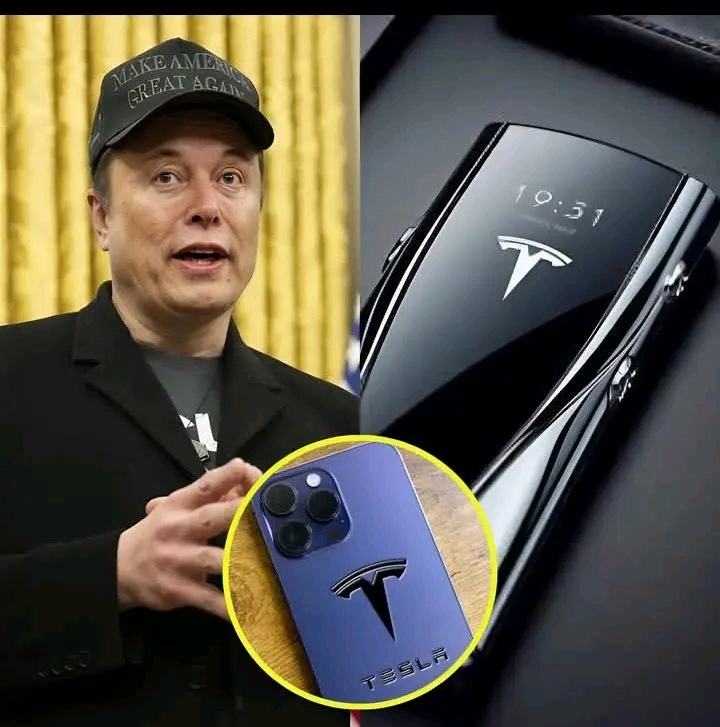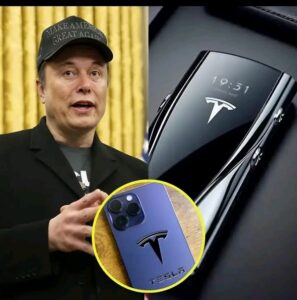
When Elon Musk strode onto the stage with a sleek smartphone—which cost $237, no less—and said that this could be the “end of Apple,” hearts skipped a beat. The tech community held its breath at that moment. Was this a daring marketing gimmick? Or the emergence of a fearless new iPhone competitor?
Musk dubbed it the 2025 Tesla Pi Phone, a direct challenge to Apple’s hegemony without even a concept or teaser. According to him, it would have features that up until now seemed like science fiction: deep integration of the Tesla ecosystem, built-in Starlink connectivity, potential solar trickle charging, and a specially designed operating system that is optimized for motion and space. It may sound bold, even reckless, but in a time of upheaval, boldness is frequently what people remember.
To be clear, none of this is confirmed as of yet. Official specifications and prototypes have not been made public by Tesla. Musk has refuted earlier rumors by stating that he won’t be developing a phone until Google or Apple bans Tesla’s services or apps. The audience still let out a gasp when the stage lights went down and the Pi Phone materialized between Musk’s fingers. Particularly provocative is the $237 price point. It’s a sort of gauntlet thrown down, not just undercutting rivals.
Musk wants people to wonder how he was able to do that. What compromises were made and what compromises were made? Could such a low-cost device actually offer integration with SpaceX’s constellation, high performance, and connectivity everywhere?
The most alluring angle is Starlink. Imagine your phone speaking directly to satellites in orbit without the need for towers or cellular contracts. That might be revolutionary in isolated places or disaster areas. However, the hardware engineering and physics problems are enormous. It’s not easy to fit satellite links, power control, and antenna arrays into a small phone. However, there have been indications in recent years that some aspects of this vision are progressively coming to pass. “Direct to cell” satellite services are being actively pursued by SpaceX.
Additionally, Tesla has significant investments in ecosystems—software, energy, and automobiles—which may help them connect devices more easily than Google or Apple. I can’t resist adding drama to this situation: if Musk fulfills even half of his promises, then it’s game on.
Apple’s fans are fiercely loyal, and the company has become comfortable at the top. However, that type of status quo is what disruptors thrive on. When I held an early iPhone for the first time in 2007, it was a magical experience. Loyalty may be rewritten if the Pi Phone delivers a comparable shock, particularly in markets where high-end phones are currently underrepresented.
But I also have my doubts. It feels like a headline grab because of how cheap it is. They smell like hype because the promises are so big. Additionally, Tesla has a history of making early debuts and refining them over time. With numerous features promised for upcoming updates, the Pi Phone may debut as a proof of concept.
The fact that the tech industry is booming once more is what matters today. Roadmaps are being reconsidered by analysts. Apple is silent. Samsung’s investigation. Network operators, OS developers, and messaging apps are all keeping an eye on things.

Think about this in terms of sports: For many years, Apple has been the champion. Musk simply rushed onto the field, grabbed the ball, and yelled, “Let’s play.” It’s unclear if he scores. However, the field has been reset. And the underdog may have a way, for once.





